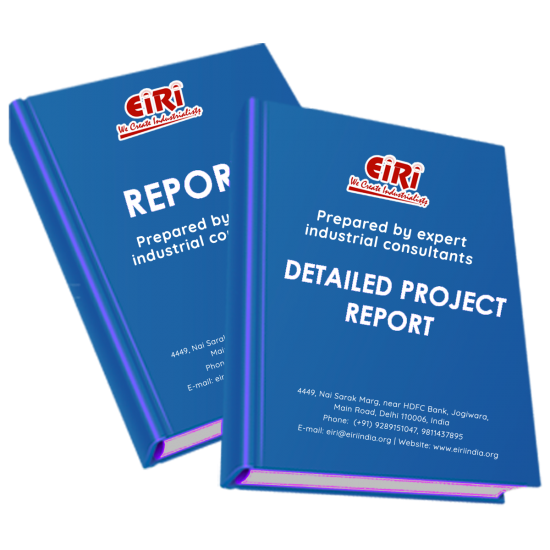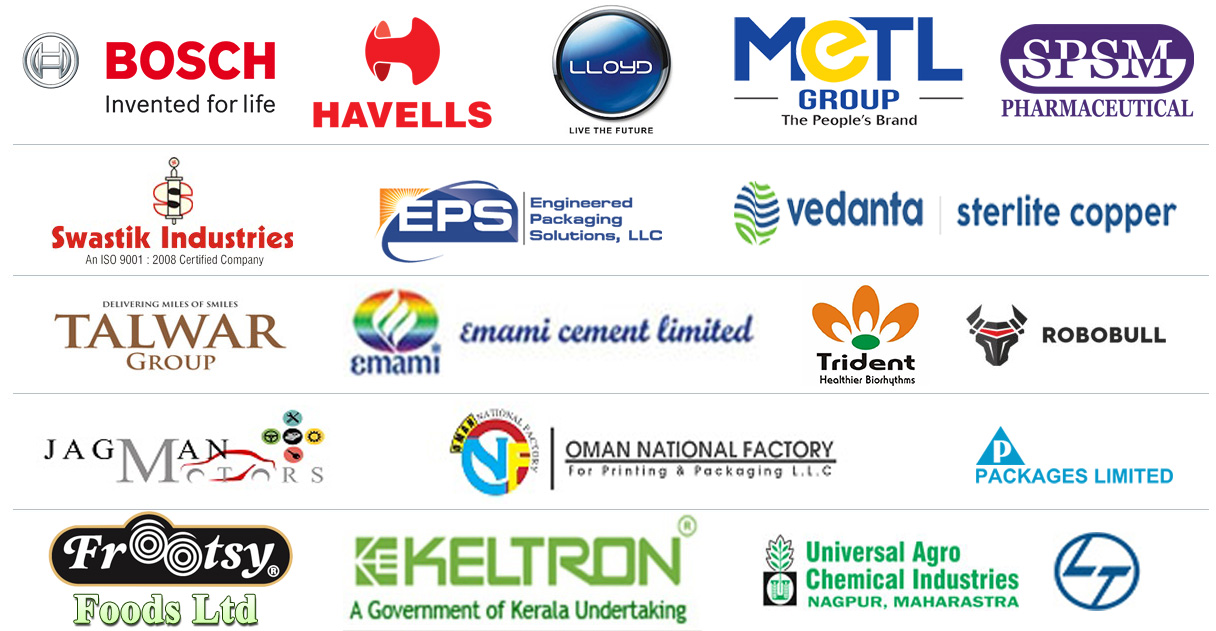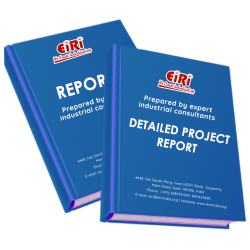Detailed Project Report on modern rice mill

- More than 40 years of experience
- Managed by expert industrial consultants
- ISO 9001-2015 Certified
- Registered under MSME, UAM No: DL01E0012000
- 24/5 Research Support
Get your quesries resolved from an industry expert. Ask your queries before report or book purchase. - Custom Research Service
Speak to the our consultant to design an exclusive study to serve your research needs. - Quality Assurance
All reports are prepared by highly qualified consultants & verified by a panel of experts. - Information Security
Your personal & confidential information is safe & secure.
MODERN RICE MILL
[EIRI/EDPR/3885] J.C.: 2000
Rice is a vital food material for more than half of the world’s population, the importance of which as a food crop has been increasing with increase in population. Rice is regarded as a first cultivated crop of Asia. Preserved rice grains were found in China around 3000 B.C. Paddy grains found during excavation at Hastinapur (India) around 1000-750 B.C. considered as an oldest sample in the world.
Rice has been found in archaeological sites dating to 8000 bc, although the date of rice domestication is a matter of continuing debate. Two species of domesticated rice, Oryza sativa (Asian) and Oryza glaberrima (African) are grown globally. Numerous traits separate wild and domesticated rices including changes in: pericarp colour, dormancy, shattering, panicle architecture, tiller number, mating type and number and size of seeds.
Rice is the world’s largest food crop, providing the caloricneeds of millions of people daily. There are two distincttypes of domesticated rice, Oryza sativa, or Asian riceand Oryza glaberrima, African rice, both of which haveunique domestication histories. In order to examine thevariation selected by humans over our long relationshipwith rice, we must first look at the ancestors of ourmodern cultivars. The genus Oryza contains 21 wild rela-tives of the domesticated rices .The genus is divided into four species complexes: the O. sativa, O. officialis, O. ridelyi and O. granulata speciescomplexes. All members of the Oryza genus have n ¼12 chromosomes and while interspecific crossing is possible within each complex, it is difficult to recover fertile off-spring from crosses across complexes. The O. sativa complex contains two domesticatedspecies: O. sativa and O. glaberrima, and five or six wildspecies: O. rufipogon, O. nivara (also considered to be anecotype of O. rufipogon), O. barthii, O.
longistaminata,O. meridionalis and O. glumaepatula, all of which arediploids. Oryza sativa is distributed globally with a high concentration in Asia, while O. glaberrima is grown inWest Africa. Oryza rufipogon can be found throughoutAsia and Oceania. Oryza barthii and O. longistaminataare African species, O. barthii endemic in West Africaand O. longistaminata is found throughout Africa. Oryzameridionalis is native to Australia and O. glumaepatula isendemic in Central and South America. Given these distributions, it is easy to locate the ancestral pools from which modern rice was extracted. The African cultivarswere domesticated from O. barthii (formally calledO. breviligulata) and O. sativa was domesticatedfrom O. rufipogon. There is still continuing debate overwhether O. rufipogon, the perennial species, O. nivara,the annual species, or possibly both were the direct ancestors of O. sativa.
Origin of Rice
Oryza Sativa, it is believed, is associated with wet, humid climate, though it is not a tropical plant. It is probably a descendent of wild grass that was most likely cultivated in the foothills of the far Eastern Himalayas. Another school of thought believes that the rice plant may have originated in southern India, then spread to the north of the country and then onwards to China. It then arrived in Korea, the Philippines (about 2000 B. C.) and then Japan and Indonesia (about 1000 B. C.). When Alexander the Great invaded India in 327 B. C., it is believed that he took rice back to Greece. Arab travelers took it to Egypt, Morocco and Spain and that is how it travelled all across Europe. Portugal and Netherlands took rice to their colonies in West Africa and then it travelled to America through the ’Columbian Exchange’ of natural resources. But as is traditionally known, rice is a slow starter and this is also true to the fact that it took close to two centuries after the voyages of Columbus for rice to take root in the Americas. Thereafter the journey of rice continues with the Moors taking it to Spain in 700 A. D. and then the Spanish brought rice to South America at the beginning of 17th century. The journey of rice around the world has been slow, but once it took root it stayed and became a major agriculture and economic product for the people. In the Indian subcontinent more than a quarter of the cultivated land is given to rice. It is a very essential part of the daily meal in the southern and eastern parts of India. In the northern and central parts of the subcontinent, where wheat is frequently eaten, rice holds its own and is cooked daily as well as on festivals and special occasions.
COST ESTIMATION
Plant Capacity 48 Ton/Day
Land & Building (4500 sq.mt.) Rs. 3.82 Cr
Plant & Machinery Rs. 2.01 Cr
Working Capital for 1 Month Rs. 6.07 Cr
Total Capital Investment Rs. 12.63 Cr
Rate of Return 86%
Break Even Point 21%
- INTRODUCTION
- ORIGIN OF RICE
- AREA UNDER MAJOR CROPS FROM 1950-51 ONWARDS (IN MILLION HECTARES)
- PRODUCTION OF MAJOR AGRICULTURAL CROPS
- ADVANTAGE OF RICE
- NUTRITIONAL VALUE OF RICE
- NUTRITIONAL VALUE OF CEREALS PER 100 GRAMS
- MEDICINAL VALUE:
- HISTORY OF RICE
- RICE GROWING REGION IN INDIA
- THE TOP 10 INDIAN STATES ARE:
- 1. WEST BENGAL
- 2. UTTAR PRADESH
- 3. PUNJAB
- SCIENTIFIC NAME & BOTANICAL DESCRIPTION
- SCIENTIFIC NAME
- HABIT AND DISTRIBUTION OF DIFFERENT SPECIES OF RICE
- BOTANICAL DESCRIPTION
- THE INDICA TYPE FROM TROPICAL ASIA IS USUALLY CHARACTERIZED BY:
- THE JAPONICA TYPE, FROM TEMPERATE AND SUBTROPICAL ASIA,
- IS CHARACTERIZED BY:
- STRUCTURE OF THE PLANT
- VEGETATIVE ORGANS
- THE AURICLE IS A 2 TO 5 MM APPENDIX, CRESCENT-SHAPED
- AND COVERED WITH HAIR.
- REPRODUCTIVE (FLOWER) ORGANS
- GRAIN OR PADDY: THE RICE GRAIN IS COMPOSED OF THREE MAIN PARTS:
- TYPES OF RICE
- LENGTH AND SHAPE
- TEXTURE
- COLOR
- AROMA
- ARBORIO
- BASMATI
- BROWN
- JASMINE
- WHITE
- MARKET SURVEY
- INDIA RICE MARKET ANALYSIS
- ENHANCING PRODUCTION CAPACITIES
- GLOBAL RICE MARKET SEGMENTATION:
- SEGMENTATION BY RICE LENGTH:
- SEGMENTATION BY TYPE:
- SEGMENTATION BY DISTRIBUTION CHANNEL:
- SEGMENTATION BY REGION:
- SOME OF THE KEY PLAYERS IN RICE INDUSTRY ARE
- GLOBAL RICE MARKET ANALYSIS
- PRODUCTION ANALYSIS IN THE UNITED STATES
- INDIA IS THE LARGEST EXPORTER OF RICE
- OPPORTUNITY FOR INDIAN BASMATI RICE EXPORTS
- GLOBAL CONSUMPTION OF RICE HAS SHOWN CONSTANT INCREASE
- WHAT WOULD DRIVE BASMATI EXPORTS IN 2020
- RISING DISPOSABLE INCOME IS BENEFITING THE BASMATI RICE MARKET
- LIST OF MACHINERY
- DETAILS OF 6 TPH RAW RICE PLANT:
- MANUFACTURING PROCESS
- RICE MILLING SYSTEMS
- MILLING PROCESS
- RICE MILLING PROCESS STEP1: CLEANING
- CLEANING PADDY PRIOR TO HUSKING AND WHITENING IS CRUCIAL IN
- ATTAINING HIGH MILLING RECOVERIES.
- CLEANING MACHINERY
- PRE CLEANER:
- CLASSIFIER:
- DE STONER:
- RICE MILLING PROCESS
- STEP2: DE HUSKING OR DE HULLING
- DE-HUSKING / HULLING MACHINERY
- PNEUMATIC SHELLER
- TRAY SEPARATOR
- HUSK SEPARATOR
- RICE MILLING PROCESS:
- STEP 3: WHITENING OR POLISHING
- RICE MILLING PROCESS:
- STEP4: GRADING
- GRADING MACHINERY
- ROTARY SIFTER:
- LENGTH GRADER:
- THICKNESS GRADER:
- RICE MILLING PROCESS:
- STEP 5: COLOR SORTING
- PROCESS FLOW DIAGRAM
- MACHINERY SUPPLIERS
- RAW MATERIAL SUPPLIERS
- MACHINERY PHOTOGRAPHS
- 6 TON RICE MILL PLANT
- AIR COMPRESSOR
- AUTOMATIC PACKING MACHINE
- COLOR SORTER
- FABRICATION & ERECTION
- PADDY CLEANER
- PLC PANEL
- RAW MATERIAL PHOTOGRAPHS
- PRODUCT PHOTOGRAPHS
APPENDIX – A:
01. PLANT ECONOMICS
02. LAND & BUILDING
03. PLANT AND MACHINERY
04. OTHER FIXED ASSESTS
05. FIXED CAPITAL
06. RAW MATERIAL
07. SALARY AND WAGES
08. UTILITIES AND OVERHEADS
09. TOTAL WORKING CAPITAL
10. TOTAL CAPITAL INVESTMENT
11. COST OF PRODUCTION
12. TURN OVER/ANNUM
13. BREAK EVEN POINT
14. RESOURCES FOR FINANCE
15. INSTALMENT PAYABLE IN 5 YEARS
16. DEPRECIATION CHART FOR 5 YEARS
17. PROFIT ANALYSIS FOR 5 YEARS
18. PROJECTED BALANCE SHEET FOR (5 YEARS)
How to Make Project Report?
Detailed Project Report (DPR) includes Present Market Position and Expected Future Demand, Technology, Manufacturing Process, Investment Opportunity, Plant Economics and Project Financials. comprehensive analysis from industry covering detailed reporting and evaluates the position of the industry by providing insights to the SWOT analysis of the industry.
Each report include Plant Capacity, requirement of Land & Building, Plant & Machinery, Flow Sheet Diagram, Raw Materials detail with suppliers list, Total Capital Investment along with detailed calculation on Rate of Return, Break-Even Analysis and Profitability Analysis. The report also provides a birds eye view of the global industry with details on projected market size and then progresses to evaluate the industry in detail.
We can prepare detailed project report on any industry as per your requirement.
We can also modify the project capacity and project cost as per your requirement. If you are planning to start a business, contact us today.
Detailed Project Report (DPR) gives you access to decisive data such as:
- Market growth drivers
- Factors limiting market growth
- Current market trends
- Market structure
- Key highlights
Overview of key market forces propelling and restraining market growth:
- Up-to-date analyses of market trends and technological improvements
- Pin-point analyses of market competition dynamics to offer you a competitive edge major competitors
- An array of graphics, BEP analysis of major industry segments
- Detailed analyses of industry trends
- A well-defined technological growth with an impact-analysis
- A clear understanding of the competitive landscape and key product segments
Need Customized Project Report?
- Ask for FREE project related details with our consultant/industry expert.
- Share your specific research requirements for customized project report.
- Request for due diligence and consumer centric studies.
- Still haven't found what you're looking for? Speak to our Custom Research Team
About Engineers India Research Institute:
Note: We can also prepare project report on any subject based on your requirement and country. If you need, we can modify the project capacity and project cost based on your requirement.
Our Clients

Our Approach
- Our research reports comprehensively cover Indian markets (can be modified as per your country), present investigation, standpoint and gauge for a time of five years*.
- The market conjectures are produced on the premise of optional research and are cross-accepted through associations with the business players
- We use dependable wellsprings of data and databases. What's more, data from such sources is handled by us and incorporated into the report
Why buy EIRI reports?
- Our project reports include detailed analysis that help to get industry Present Market Position and Expected Future Demand.
- Offer real analysis driving variables for the business and most recent business sector patterns in the business
- This report comprehends the present status of the business by clarifying a complete SWOT examination and investigation of the interest supply circumstance
- Report gives investigation and top to bottom money related correlation of real players/competitors
- The report gives gauges of key parameters which foresees the business execution





















![bagasse tableware [plates, glass, bowl, food container etc.] bagasse tableware [plates, glass, bowl, food container etc.]](https://www.eiriindia.org/image/cache/catalog/report/detailed-project-report-cma-data-250x250.png)
